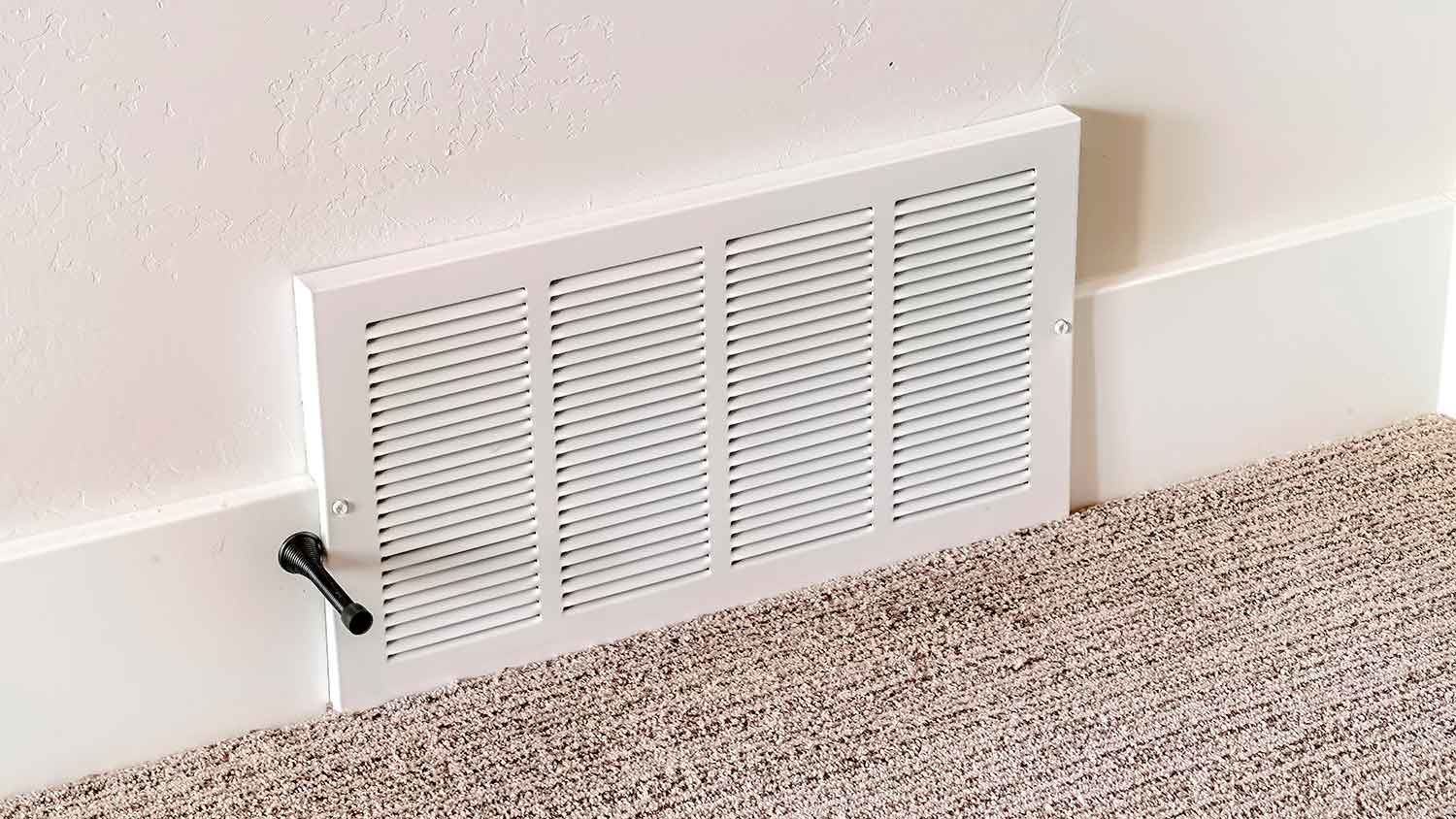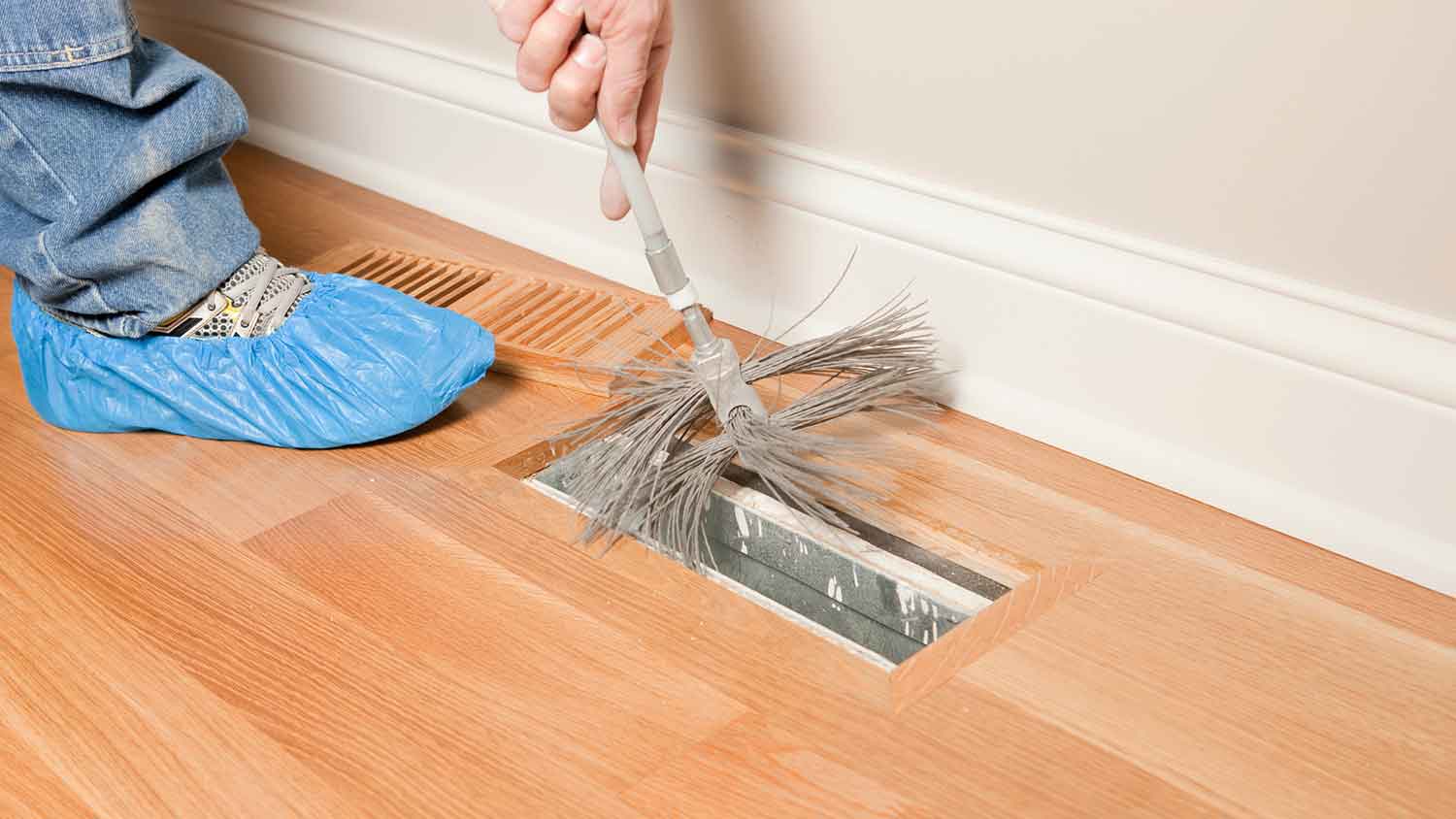
Discover the factors influencing air duct replacement costs in Atlanta, GA. Learn how to save money and make an informed decision for your home's comfort.
Keep your chill with this test


Incorrectly testing return air vents yourself can lead to leaks, poor airflow, or stress on your HVAC system.
A duct installation pro can effectively test if your return air vents are working, as well as locate hidden leaks, repair or replace ductwork, and help optimize airflow.
Air duct cleaning costs about $380, but a clogged ductwork can result in higher energy bills.
If your return air vents aren’t working and your HVAC system is about 15 to 25 years old, you may need to pay for the cost of a full HVAC replacement for about $7,500.
Your return air vent is integral to your home’s HVAC, as it draws in warmer air to recondition it. After reconditioning, your HVAC pushes the cooler air through your ductwork and into your home. That’s why it’s important to locate and test them regularly. Our guide will show you where to locate them, how to tell if the return air is working, and common problems that arise with them.
In your home, you’ll likely have two different kinds of air vents. Supply air vents push the air from your ductwork into your home’s living space. Meanwhile, return air vents draw the warmer back into your ductwork. From there, your HVAC reconditions the air, removing warmer molecules from it, before dispensing it back into your home. The result is you have more balanced air temperature and humidity throughout your home, leading to a more comfortable environment year-round.
You’ll want to test your return air vents as they can clue you into other problems that might be at play in your home’s HVAC system. If you notice your home becomes stuffy even as you crank the air conditioner, it could indicate your return air vents are not working properly. And as you crank your air conditioner, it stresses the system more. In turn, you could see higher energy bills and a shorter operating life for your air conditioner.
On top of that, your home won’t be as comfortable as intended. Doing this simple test annually can ensure you’re not letting money fly away while keeping your home nice and cozy.
Building codes for newer homes suggest that there should be return air vents in every room of your home. If you have an older house, you might just have one return air vent per floor. To find and test your return air vent, do the following:

Start by grabbing a tissue, newspaper, or any piece of paper that’s fairly flimsy. The goal is to have something to show you which direction the air travels.

Next, find an air vent and hold the piece of paper around six inches from it. When you locate a supply air vent, it’ll have a fan effect, trying to blow the piece of paper out of your hands and into the room. Conversely, with return air vents, you’ll find the air trying to pull the paper into the air vent. When you experience this, not only have you found a return air vent, but you have also found a working one.
Here are some tips to keep your return air vents working well:

The ductwork is like the vein system of your home, carrying air into and out of your environment. As such, you’ll want to keep it clean so you breathe cleaner air and your HVAC system doesn’t have to work as hard to distribute the air. Once every three to five years, have your ductwork cleaned. The average air duct cleaning cost is $380, though factors such as the size of the unit, the type it is, and any problems the HVAC technician might encounter can influence the cost.
Another common problem is there are leaks in your ductwork. When this happens, it can form water on the air vents. So, when you’re learning how to stop condensation on air vents, your ductwork is likely the culprit. You can locate leaks by finding duct joints, this is where two ducts meet. Run your hand over the air to see if there are any leaks. If so, you can use a mastic sealant to cover the leaks you discover. You can also reach out to a local duct installer, as they have the tools and know-how to find the problems and address them promptly.
Another common problem is having ductwork that is worn down with age. Typically, ductwork lasts between 10 to 15 years with proper maintenance. If you’re nearing its operational end, you’ll want to consider having the system replaced. Speak with a local duct installer, who can devise solutions that work with your home. This includes the type you want, creative ways to hide your ductwork, and ways to design the ductwork to any new additions you’ll have, like an attached dwelling unit.
If you own an older home, check to see how old your HVAC system is. You can locate the nameplate on your home’s air conditioning unit. On it will have the manufacturer’s date. If this is smudged or illegible, you can pay for an HVAC technician to come out for an inspection during which they can estimate age.
HVAC systems last between 15 to 25 years with proper maintenance. If your unit is in that age range and your return air vents don’t work, now might be a good time to replace your system. The average HVAC replacement costs are $7,500, which is steep on the surface. However, when you consider, a new home will make your environment more comfortable and lead to lower energy costs, it’s well worth the investment.
From getting an estimate to ordering flooring to installation, Randolph and Mortimer was outstanding. This was a large installation in a commercial building but they worked with us to install the flooring quickly and around our scheduled open hours. The flooring installers were efficient and...
Space Air Duct Cleaning did an amazing job. Our air feels fresher, and the technicians were professional and efficient. Highly recommend!
Every single individual with Basement Kings is friendly, courteous, respectful and hardworking. Each of the crew members that worked to finish our basement was extremely knowledgeable and I enjoyed getting to know each of them. The quality of work is outstanding and every effort is made to...
Excellent service. Technician was extremely professional and courteous.
I know David Vaughn ( the owner ) personally and knew that he would be very thorough in his inspection of a house I was interested in purchasing. He was exactly that and I will hire him for the next house I need an Inspection for.. Very professional and on time.
Responded quickly to an emergency situation. Willing to work with you financially very clean and efficient work. Would hire them and recommend them always.
Top ten of the guys I've ever contracted to do work! Brian was super helpful and understanding of the things we needed done. He got it done under budget and did more than we ever expected! They show up and get it done and it's super easy to communicate with him and the guys even...
They were absolutely amazing. Finished in just under an hour and were so helpful and kind. Will definitely recommend to all my friends and use them again. Thanks!
Showed up on time and were professional and efficient! Even took the time to disassemble and wrap our furniture so nothing would be damaged in the move.
Terry was very knowledgeable and dedicated: He made sure my sprinkler system was up and working properly even though the temperature that day was close to 100 degrees. I appreciate the kindness and dedication and will use him again.
From average costs to expert advice, get all the answers you need to get your job done.

Discover the factors influencing air duct replacement costs in Atlanta, GA. Learn how to save money and make an informed decision for your home's comfort.

What you’ll pay in Atlanta, Georgia, for furnace repairs depends on many factors. Here’s a breakdown of what can go wrong and the cost to fix those issues.

Getting AC and furnace replacement done at the same time can lead to huge benefits for your wallet and your home. Here’s everything you need to know.

Baseboard heater covers can endure a lot of wear and tear, but eventually you’ll want to replace them. Here’s the best way to switch out baseboard heater covers.

Do you have a clogged AC drain line? We dig into the reasons behind those pesky blockages and how to clear them for optimal AC performance.

You’ll need to get creative if you want to run your portable AC in a windowless room. Here’s how to vent a portable air conditioner without a window.